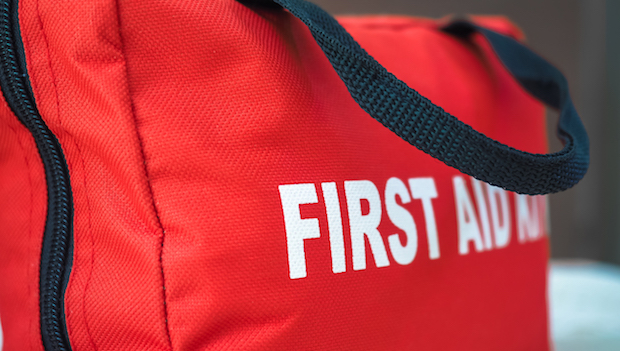
Whether your camping trip takes you far afield or you're more comfortable sticking to the trail leading down to the local lake, even a minor illness or injury can spoil your adventures. That is, unless you have a first aid kit stocked with the right supplies.
Camping Events Near You
The further away from civilization you roam, the more extensive your first aid kit needs to be. And, the bigger your group of happy campers, the more supplies you'll want to have on hand.
You can certainly buy a camping first aid kit, but you can save some serious souvenir money by making your own. It's not that difficult, and in fact, you probably already have many of the critical items you need right in your medicine cabinet.
What to Store It In
A good camping first aid kit can be as simple as a few heavy-duty, waterproof zipper bags if you're backpacking. You can also upgrade to zipper bags stored inside a rugged plastic storage box with a snap-on lid. Bottom line: You're going to be outdoors. Things are going to get wet or dirty or both. Keeping your kit clean, dry and organized is paramount.
Once you've gathered the recommended items (see below), bag each one separately and label the bags with a thick black permanent marker. This will prevent items from getting jumbled together, and it will save you from frantically searching through your camping gear for what you need, when you need it.
What to Pack
The idea is to make your kit as small and compact as possible, while still having enough items on hand to fix the types of injuries common to camping. Yes, camping is supposed to be enjoyable, but as with most types of outdoor activities, there's still the element of risk. Plan for fun, but be prepared.
Since a drugstore or supermarket may not be close by, having a little of everything on hand is a good idea. You can always re-stock, and as you gain more camping experience, you may find that you're carrying too much of some things or not enough or others. Keep in mind that you can add to or delete from your kit according to personal needs. Following is a list of recommended items to get you started:
The Basics
- Adhesive bandage tape
- Alcohol swabs or wipes
- Allergy medicine (over-the-counter)
- Band-Aids in various sizes
- Bulb irrigation syringe
- Butterfly closures
- Chemical heat and cold packs
- Cotton swabs, balls and pads
- Decongestion spray
- Digital thermometer
- Dry-wash pads or wipes
- Elastic bandages
- Empty zipper bags to bag used items for safe disposal
- First Aid manual (read it before you need it)
- Flashlight
- Hand sanitizer
- Latex gloves (sterile)
- Magnifying glass for seeing splinters or starting a safe fire
- Moleskin pads
- Non-adhesive gauze pads in various sizes
- Petroleum jelly
- Povidone-iodine solution
- Scissors
- Sunblock lotion or spray
- Two-inch gauze roll
- Triple antibiotic ointment
- Tweezers to remove splinters and glass
Medications
- Aloe Vera gel
- Antacids, anti-diarrheal and anti-nausea medications (over-the-counter)
- Antibiotic (Dicloxacillin) for skin infections
- Antihistamine (Benadryl) for allergic reactions and insomnia
- Anti-inflammatory (Ibuprofen, Acetaminophen) for inflammation, pain
- Anti-Itch spray
- Burn cream
- Epi-pen for people with life-threatening allergies
- Hydrocortisone cream
- Iodine water treatment/water purification tablets in case you run out of drinking water
- Sting relief spray or lotion
* If you take prescription medications, check with your doctor for compatibility
Handy Optional Items
- Duct tape
- Pocket knife
- Pocket saw
- Super glue
- Small mirror for reflecting sunlight as a signal
Back at Home
Once you've returned home, take the time to inspect your camping first aid kit. Make sure everything is clean and in good order, and remember to re-stock any items that were used or have expired. This is also an excellent opportunity to think back on your trip and add items that would have been good to have on hand.
Final Tips
The need for first aid is usually triggered by an emergency, and an emergency is certainly not the time to be digging through a stuffed backpack or storage compartment looking for your kit. Make sure your kit is easily accessible at all times, and that everyone in your camping party knows where it's located.


